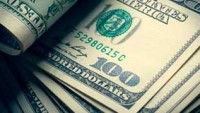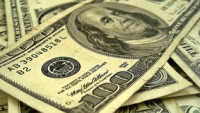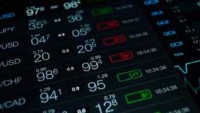 USD: Action is elsewhere until Friday
USD: Action is elsewhere until Friday
The dollar continues to lack a significant trend and remains to the topside of a two-month trading range. US interest rate volatility remains subdued and that means interest has resumed in the yen-funded carry trade. USD/JPY continues to hover just below 160 as the yen softens again, while some of the big beasts hit hard on the recent carry trade unwind – e.g., the Mexican peso – continue to recover. It seems that there is not quite enough bad news to justify short positions in expensive currencies like the Mexican peso. Additionally, the low volatility environment makes it more difficult for Japanese authorities to intervene at 160. We suspect they had been hoping for the US rates cycle to turn lower by now and be the key driver of a lower USD/JPY.
Instead, the dollar remains sidelined ahead of two key event risks later this week. Thursday night sees the first presidential debate between President Biden and Donald Trump on CNN. It may be too early to expect this, but we will want to see whether the dollar responds to who ‘wins’ the debate. A positive outcome for Trump could see the dollar edge higher. But the bigger market mover this week will be Friday’s core PCE inflation read. Should it meet expectations of a 0.1% month-on-month reading, we suspect the short-end of the US curve can come lower and take the dollar with it. However, most of any dollar downside will be felt against the likes of the Australian dollar and the Norwegian krone, rather than against the euro.
The US data calendar is quiet today apart from what is expected to be a modest dip in US June consumer confidence. DXY to trade well within a 105.00 to 106.00 range.
EUR: National Rally says the right things
French:German yield spreads have narrowed a little and the euro has edged up after representatives of France’s National Rally (RN) party have said the party will respect the nation’s budget rules. However, the plan to cut EUR7bn in taxes still seems to exist – partially funded by slashing France’s contribution to the EU budget. Our eurozone macro team sees continued stress here and we would therefore warn against chasing EUR/USD back to and over 1.08, since there are still many possibly bearish chapters to play out here. One of those could be the Leftist Alliance doing a little better than expected in Sunday’s elections. And while bond investors will welcome soothing words from the RN about France’s budget trajectory, our team suspects it is too early for the party to be making significant concessions to its manifesto.
We therefore expect that the euro will struggle to sustain a rally over the coming weeks and that key euro cross rates, such as EUR/AUD and EUR/NOK, will come lower. These moves should accelerate should US inflation indeed come in on the low side.
EUR/USD may therefore struggle to break to the topside of its 1.0660-1.0760 range.
GBP: Sterling rates look priced too close to the US
Looking at forward curves, it is remarkable that UK interest rates remain priced so close to the US. Both price around 45bp of rate cuts this year and both have a terminal rate for forthcoming easing cycles around the 3.30/3.40% area. Our conviction view this summer is that UK rates will be repriced lower starting with a rate cut in August. And this should lead to a lower pound.
We will not hear anything more from the Bank of England until after the 4 July general election now. But thereafter, we would be looking for the more dovish members of the seven who voted for unchanged rates last week to make their voices heard. Uncertain developments in the eurozone suggest EUR/GBP may struggle to break back above 0.8490 in the short term. But a cross rate like GBP/NOK could come lower over the next month if both US rates come lower and the BoE doves emerge in July.
CAD: More disinflation, more cuts
Canada publishes CPI data for May today, and we expect another inflation slowdown in line with consensus expectations. Headline CPI is seen decelerating from 2.7% to 2.6% year-on-year and the core inflation metrics may also keep inching lower.
This is the second big piece of Canadian data since the Bank of Canada cut rates on 5 June. Earlier this month, jobs data showed a slowdown in hiring in May, with unemployment ticking higher and full-time employment dropping.
The Canadian dollar has been trading gradually stronger since the June cut, largely on the back of generally supportive sentiment, higher oil prices and distance from the EU political turmoil. Still, as we expect three more rate cuts by the BoC this year, we continue to expect the loonie to be a laggard in the pro-cyclical space this summer.












